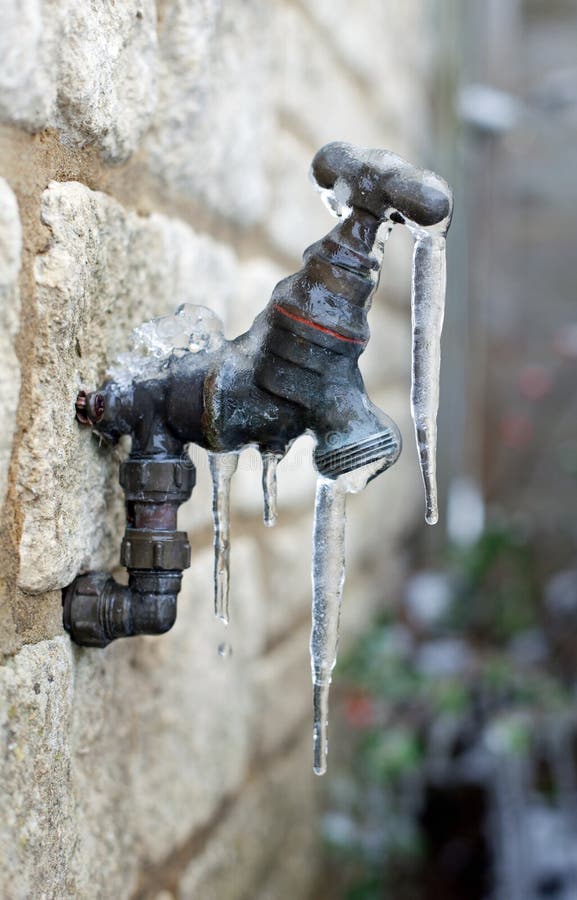Avoiding Frozen Pipes: Effective Strategies for Cold Weather
Avoiding Frozen Pipes: Effective Strategies for Cold Weather
Blog Article
We've encountered this post involving How to Prevent Your Pipes From Freezing directly below on the web and reckoned it made sense to write about it with you in this article.

Winter can ruin your plumbing, especially by freezing pipelines. Here's exactly how to avoid it from taking place and what to do if it does.
Intro
As temperature levels decrease, the risk of icy pipes increases, possibly bring about pricey fixings and water damages. Understanding exactly how to stop frozen pipes is vital for property owners in cool environments.
Comprehending Icy Pipes
What triggers pipes to ice up?
Pipelines ice up when exposed to temperatures below 32 ° F (0 ° C) for extended durations. As water inside the pipelines freezes, it increases, taxing the pipeline wall surfaces and possibly triggering them to burst.
Risks and problems
Icy pipelines can lead to water supply disruptions, residential or commercial property damages, and costly repairs. Ruptured pipes can flooding homes and cause extensive architectural damage.
Indications of Frozen Pipes
Determining icy pipelines early can avoid them from rupturing.
Just how to determine icy pipelines
Seek lowered water flow from faucets, unusual smells or noises from pipes, and visible frost on revealed pipelines.
Prevention Tips
Insulating at risk pipelines
Wrap pipes in insulation sleeves or make use of warmth tape to safeguard them from freezing temperatures. Focus on pipes in unheated or exterior areas of the home.
Heating strategies
Keep interior spaces sufficiently heated, especially areas with pipes. Open cabinet doors to allow cozy air to circulate around pipes under sinks.
Shielding Outdoor Pipes
Yard hose pipes and outside faucets
Detach and drain pipes yard hoses before winter months. Install frost-proof faucets or cover outside faucets with insulated caps.
What to Do If Your Pipes Freeze
Immediate actions to take
If you suspect frozen pipes, maintain taps available to alleviate stress as the ice melts. Make use of a hairdryer or towels soaked in warm water to thaw pipes slowly.
Long-Term Solutions
Structural modifications
Think about rerouting pipelines away from outside walls or unheated locations. Include added insulation to attics, cellars, and crawl spaces.
Upgrading insulation
Invest in high-quality insulation for pipelines, attics, and walls. Proper insulation aids keep constant temperatures and minimizes the risk of frozen pipes.
Conclusion
Preventing icy pipes calls for positive procedures and fast reactions. By understanding the causes, indications, and preventive measures, homeowners can shield their pipes throughout winter.
Helpful Tips to Prevent Frozen Pipes this Winter
UNDERSTANDING THE BASICS: WHY PIPES FREEZE AND WHY IT’S A PROBLEM
Water freezing inside pipes is common during the winter months, but understanding why pipes freeze, and the potential problems it can cause is crucial in preventing such incidents. This section will delve into the basics of why pipes freeze and the associated problems that may arise.
THE SCIENCE BEHIND FROZEN PIPES
When water reaches freezing temperatures, it undergoes a physical transformation and solidifies into ice. This expansion of water as it freezes is the primary reason pipes can burst. As the water inside the pipe freezes, it expands, creating immense pressure on the walls. If the pressure becomes too great, the pipe can crack or rupture, leading to leaks and water damage.
FACTORS THAT CONTRIBUTE TO PIPE FREEZING
Low Temperatures: Extremely cold weather, especially below freezing, increases the risk of pipes freezing. Uninsulated or Poorly Insulated Pipes: Pipes located in unheated areas, such as basements, crawl spaces, or attics, are more prone to freezing. Insufficient insulation or lack of insulation altogether exacerbates the problem. Exterior Wall Exposure: Pipes running along exterior walls are susceptible to freezing as they encounter colder temperatures outside. Lack of Heating or Temperature Regulation: Inadequate heating or inconsistent temperature control in your home can contribute to frozen pipes. PROBLEMS CAUSED BY FROZEN PIPES
- Pipe Bursting: As mentioned earlier, the expansion of water as it freezes can cause pipes to burst, resulting in significant water damage.
- Water Damage: When pipes burst, it can lead to flooding and water damage to your property, including walls, ceilings, flooring, and personal belongings.
- Structural Damage: Prolonged exposure to water from burst pipes can compromise the structural integrity of your home, leading to costly repairs.
- Mold and Mildew Growth: Excess moisture from water damage can create a favorable environment for mold and mildew growth, posing health risks to occupants.
- Disrupted Water Supply: Frozen pipes can also result in a complete or partial loss of water supply until the issue is resolved.
WHY CERTAIN PIPES ARE MORE PRONE TO FREEZING
- Location: Pipes located in unheated or poorly insulated areas, such as basements, crawl spaces, attics, or exterior walls, are at higher risk of freezing.
- Exterior Pipes: Outdoor pipes, such as those used for irrigation or exposed plumbing, are particularly vulnerable to freezing as they are directly exposed to the elements.
- Supply Lines: Pipes that carry water from the main water supply into your home, including the main water line, are critical to protect as freezing in these lines can affect your entire plumbing system.
- Underground Pipes: Pipes buried underground, such as those connected to sprinkler systems or outdoor faucets, can be susceptible to freezing if not properly insulated.
https://busybusy.com/blog/helpful-tips-to-prevent-frozen-pipes-this-winter/

Hopefully you enjoyed our article about Helpful Tips to Prevent Frozen Pipes this Winter. Many thanks for taking the time to read our blog post. Do you know anybody else who is looking into the subject? Take a moment to promote it. We recognize the value of your readership.
Booking Page Report this page